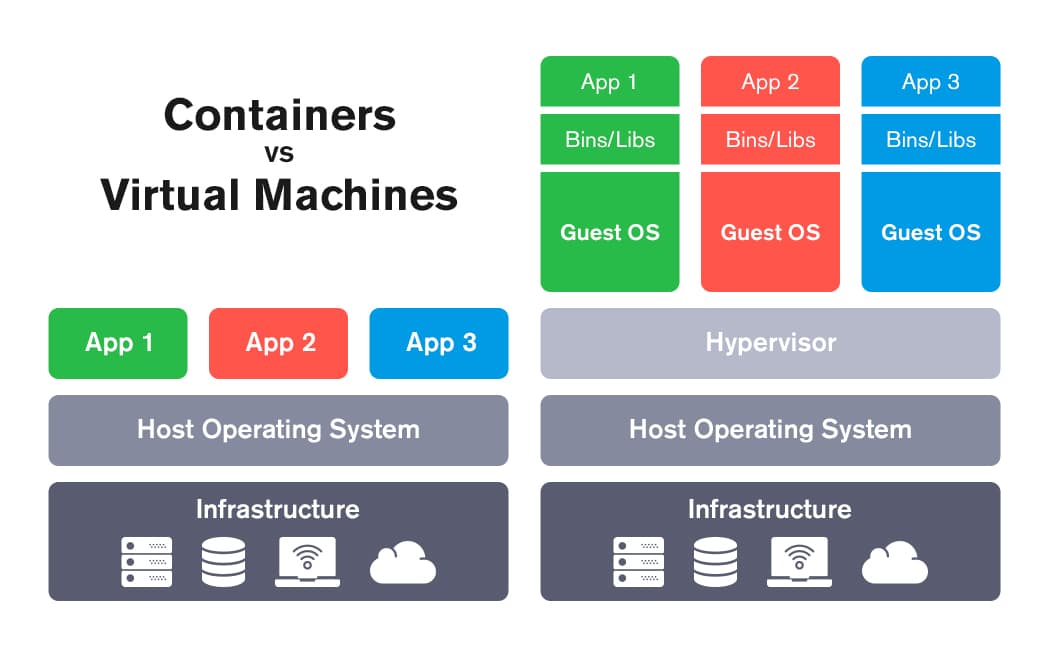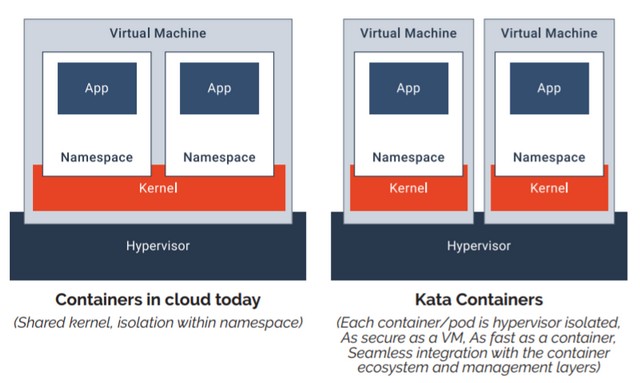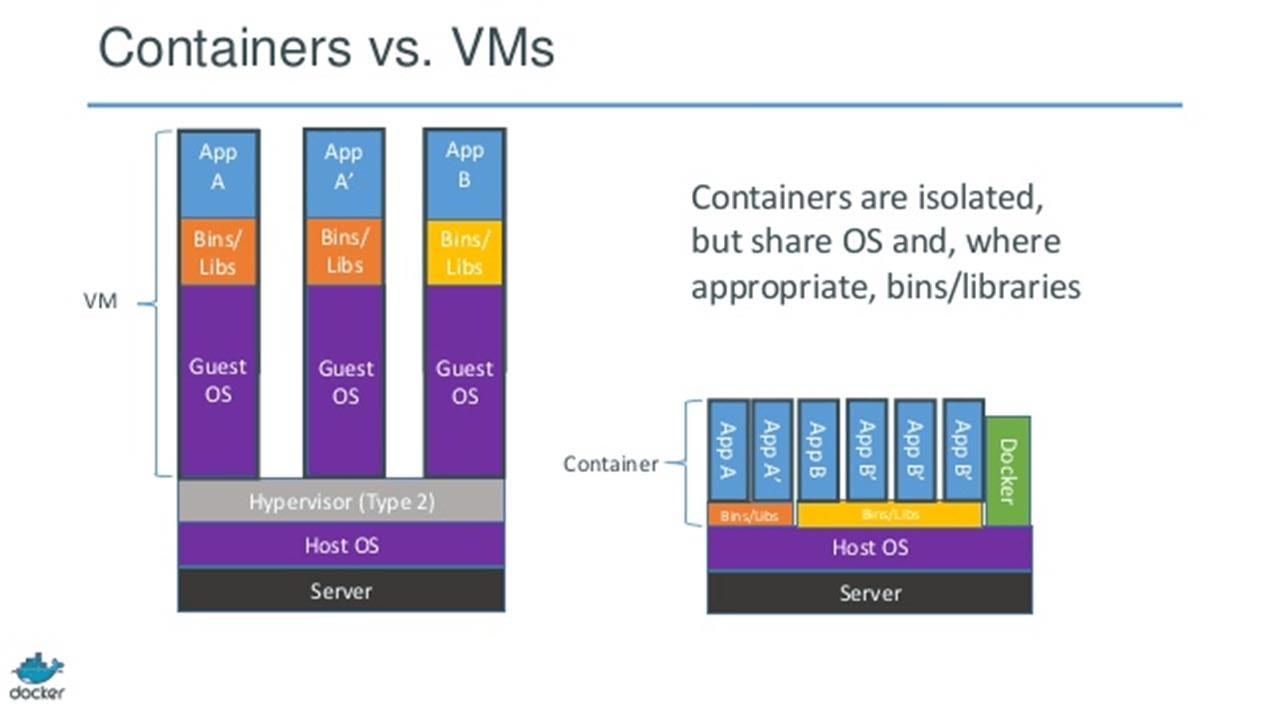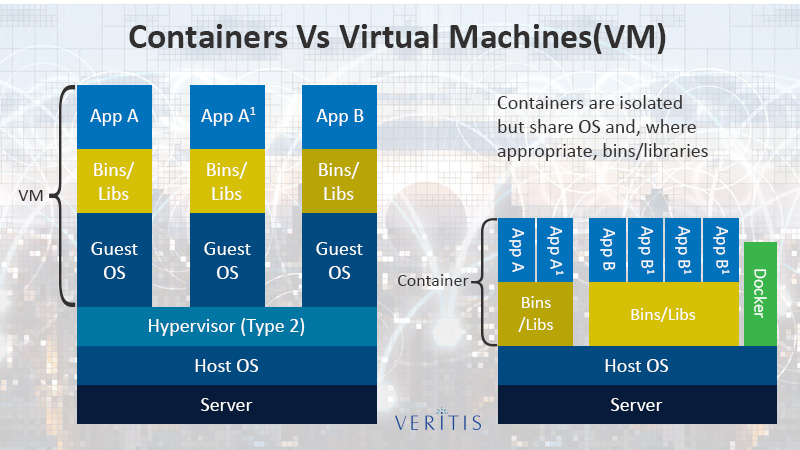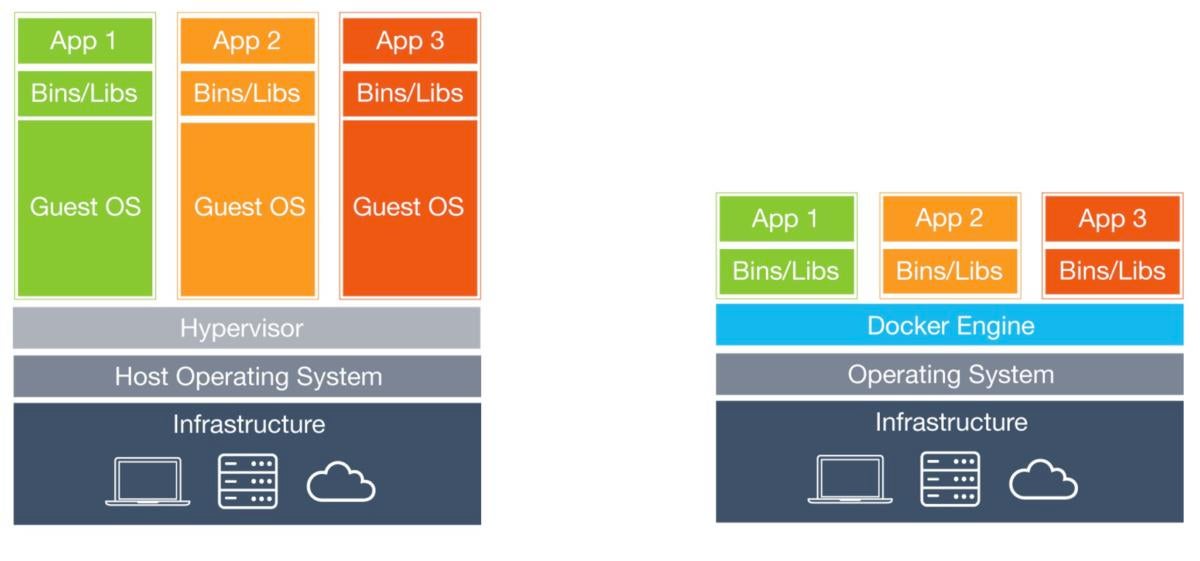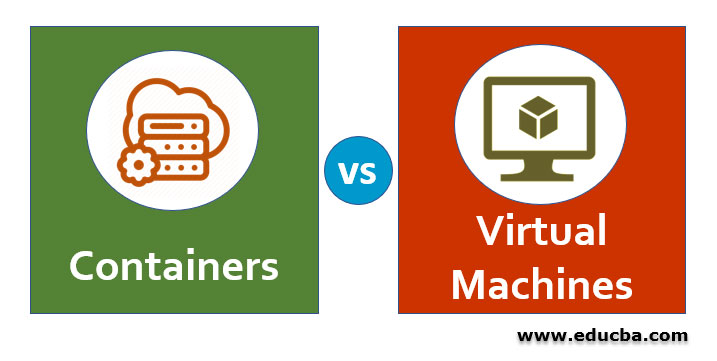Understanding Containers and Virtual Machines: An Overview
Containers and virtual machines (VMs) are two popular technologies used for application isolation, resource management, and workload consolidation. Although they share some similarities, they have distinct differences in terms of architecture, functionality, and use cases. In this article, we will explore the concept of containers and virtual machines, comparing and contrasting their features, benefits, and limitations. Containers are a lightweight, standalone, and executable software package that includes everything needed to run an application, such as code, libraries, dependencies, and system tools. Containers share the host system’s kernel and use namespaces and cgroups to isolate and allocate resources. This design enables containers to start quickly, consume fewer resources, and provide excellent portability across different environments.
Virtual machines, on the other hand, are a software emulation of a physical computer that runs on top of a hypervisor, a layer of software that abstracts and manages the underlying hardware resources. Each VM has its operating system, applications, and resources, providing complete isolation from other VMs and the host system. This architecture enables VMs to run multiple operating systems and applications on the same physical hardware, providing excellent flexibility and resource utilization.
In summary, containers and virtual machines are two complementary technologies that provide different benefits and trade-offs. Containers offer lightweight, fast, and portable application packaging and deployment, while virtual machines provide complete isolation, flexibility, and resource management. In the following sections, we will explore each technology in more detail, comparing and contrasting their features and use cases.
Virtual Machines: A Deep Dive
Virtual machines (VMs) are a popular technology for creating isolated and portable computing environments. A VM is a software emulation of a physical computer that runs on top of a hypervisor, a layer of software that abstracts and manages the underlying hardware resources. Each VM has its operating system, applications, and resources, providing complete isolation from other VMs and the host system. VMs offer several benefits, including:
- Isolation: VMs provide complete isolation between applications and operating systems, reducing the risk of conflicts, compatibility issues, and security vulnerabilities.
- Flexibility: VMs enable users to run multiple operating systems and applications on the same physical hardware, providing excellent flexibility and resource utilization.
- Portability: VMs can be easily moved between different physical machines or cloud environments, providing excellent portability and disaster recovery capabilities.
- Scalability: VMs can be easily created, deleted, and resized, providing excellent scalability and resource allocation capabilities.
However, VMs also have some limitations, including:
- Performance: VMs can suffer from performance degradation due to the overhead of the hypervisor and the sharing of resources.
- Resource utilization: VMs can consume more resources than necessary, leading to inefficiencies and higher costs.
- Complexity: VMs can be complex to manage and configure, requiring specialized skills and knowledge.
Some popular virtual machine software includes VMware, VirtualBox, Hyper-V, and KVM. These software packages offer various features, such as live migration, high availability, and fault tolerance, that enable users to create and manage VMs in a production environment.
In summary, virtual machines are a powerful technology for creating isolated and portable computing environments. However, they also have some limitations, such as performance degradation and resource inefficiencies. In the next section, we will explore the concept of containers, another popular technology for application isolation and resource management.
Containers: A Comprehensive Look
Containers are a lightweight and portable technology for application isolation and resource management. A container is a standalone and executable software package that includes everything needed to run an application, such as code, libraries, dependencies, and system tools. Containers share the host system’s kernel and use namespaces and cgroups to isolate and allocate resources. This design enables containers to start quickly, consume fewer resources, and provide excellent portability across different environments. Containers offer several advantages, including:
- Lightweight: Containers are much lighter than virtual machines, consuming fewer resources and starting faster.
- Portability: Containers can be easily moved between different physical machines or cloud environments, providing excellent portability and disaster recovery capabilities.
- Consistency: Containers provide a consistent and reliable environment for applications, reducing the risk of conflicts, compatibility issues, and configuration drift.
- Scalability: Containers can be easily created, deleted, and resized, providing excellent scalability and resource allocation capabilities.
However, containers also have some limitations, including:
- Security: Containers share the host system’s kernel, increasing the risk of security vulnerabilities and attacks.
- Complexity: Containers can be complex to manage and orchestrate, requiring specialized skills and knowledge.
- Isolation: Containers provide less isolation than virtual machines, increasing the risk of conflicts and compatibility issues.
Some popular containerization tools include Docker, Kubernetes, and OpenShift. These software packages offer various features, such as image management, networking, and storage, that enable users to create and manage containers in a production environment.
In summary, containers are a powerful technology for application isolation and resource management. However, they also have some limitations, such as security vulnerabilities and complexity. In the next section, we will compare and contrast virtual machines and containers, highlighting their similarities and differences.
Virtual Machines vs. Containers: A Head-to-Head Comparison
Virtual machines and containers are two popular technologies for application isolation and resource management. While they share some similarities, they have distinct differences in terms of architecture, functionality, and use cases. In this section, we will compare and contrast virtual machines and containers, highlighting their similarities and differences.
Performance
Containers generally offer better performance than virtual machines due to their lightweight design and shared kernel. Containers can start faster, consume fewer resources, and provide better throughput and latency than virtual machines. However, virtual machines can offer better isolation and security than containers, reducing the risk of conflicts and security vulnerabilities.
Resource utilization
Virtual machines can consume more resources than necessary due to their hypervisor overhead and isolated operating system. Containers, on the other hand, can share the host system’s kernel and use namespaces and cgroups to allocate resources efficiently. However, containers can still consume resources, even when they are not in use, leading to inefficiencies and higher costs.
Portability
Containers offer excellent portability across different physical machines and cloud environments due to their lightweight and self-contained design. Virtual machines can also be portable, but they require a hypervisor and a compatible operating system, increasing their complexity and dependencies. However, virtual machines can provide better compatibility and support for legacy applications and operating systems than containers.
Security
Virtual machines offer better isolation and security than containers due to their complete separation from the host system and other virtual machines. Containers share the host system’s kernel, increasing the risk of security vulnerabilities and attacks. However, containers can provide better network and process isolation than virtual machines, reducing the attack surface and improving the overall security posture.
In summary, virtual machines and containers have distinct differences in terms of performance, resource utilization, portability, and security. The choice between virtual machines and containers depends on the specific use case and requirements. In the next section, we will provide a guide on how to decide between virtual machines and containers based on various scenarios and factors.
How to Choose Between Virtual Machines and Containers
Deciding between virtual machines and containers depends on various factors, such as performance, resource utilization, portability, and security. Here are some scenarios where one option might be more suitable than the other:
Scenario 1: Legacy applications and operating systems
If you need to run legacy applications or operating systems that are not compatible with modern hardware or software, virtual machines might be a better option. Virtual machines can provide better compatibility and support for legacy applications and operating systems than containers.
Scenario 2: Resource-intensive workloads
If you need to run resource-intensive workloads that require dedicated resources and isolation, virtual machines might be a better option. Virtual machines can offer better isolation and security than containers, reducing the risk of conflicts and security vulnerabilities.
Scenario 3: Microservices and cloud-native applications
If you need to develop and deploy microservices and cloud-native applications that require agility, scalability, and portability, containers might be a better option. Containers can offer better performance, resource utilization, and portability than virtual machines, enabling you to deploy and scale applications quickly and efficiently.
Scenario 4: Hybrid and multi-cloud environments
If you need to deploy applications in hybrid and multi-cloud environments that require flexibility, compatibility, and standardization, containers might be a better option. Containers can provide a consistent and reliable environment for applications, reducing the risk of conflicts, compatibility issues, and configuration drift.
Scenario 5: Cost and complexity
If you need to minimize costs and complexity, containers might be a better option. Containers are generally lighter, faster, and cheaper than virtual machines, enabling you to reduce overhead, simplify management, and optimize resources.
In summary, choosing between virtual machines and containers depends on the specific use case and requirements. By considering factors such as performance, resource utilization, portability, and security, you can make an informed decision that meets your needs and delivers value to your business.
Best Practices for Implementing Virtual Machines and Containers
Implementing virtual machines and containers in a production environment requires careful planning, configuration, and management. Here are some best practices to follow:
1. Monitor performance and resource utilization
Monitoring the performance and resource utilization of virtual machines and containers is crucial to ensure they are running efficiently and effectively. Use tools such as Prometheus, Grafana, or Nagios to monitor metrics such as CPU, memory, network, and disk usage. Set up alerts and notifications to proactively identify and resolve issues before they impact users or applications.
2. Optimize resource allocation
Optimizing resource allocation is essential to ensure virtual machines and containers are using resources efficiently and effectively. Use tools such as Kubernetes Horizontal Pod Autoscaler or Amazon EC2 Auto Scaling to automatically adjust the number of virtual machines or containers based on demand. Use features such as memory and CPU limits and requests to ensure resources are allocated fairly and efficiently.
3. Implement backup and recovery strategies
Implementing backup and recovery strategies is crucial to ensure data and applications are protected and recoverable in case of failures or disasters. Use tools such as Velero, Restic, or Bacula to backup and restore virtual machines and containers. Test and validate backup and recovery procedures regularly to ensure they are working as expected.
4. Secure virtual machines and containers
Securing virtual machines and containers is essential to prevent unauthorized access, attacks, and data breaches. Use tools such as AppArmor, SELinux, or Seccomp to restrict and isolate virtual machines and containers. Use features such as network policies and security groups to control network traffic and access. Implement multi-factor authentication, encryption, and access controls to protect sensitive data and applications.
5. Automate and orchestrate virtual machines and containers
Automating and orchestrating virtual machines and containers is essential to ensure they are deployed, configured, and managed consistently and efficiently. Use tools such as Kubernetes, Docker Swarm, or OpenShift to automate and orchestrate virtual machines and containers. Implement DevOps practices such as continuous integration, delivery, and deployment to streamline development, testing, and deployment processes.
In summary, implementing virtual machines and containers in a production environment requires careful planning, configuration, and management. By following best practices such as monitoring performance and resource utilization, optimizing resource allocation, implementing backup and recovery strategies, securing virtual machines and containers, and automating and orchestrating virtual machines and containers, you can ensure they are running efficiently, effectively, and securely.
Real-World Applications of Virtual Machines and Containers
Virtual machines and containers have become essential technologies for modern IT infrastructure, enabling organizations to build, deploy, and manage applications and services with greater speed, efficiency, and flexibility. Here are some real-world applications of virtual machines and containers across various industries:
Healthcare: Improving patient care and outcomes
Virtual machines and containers can help healthcare organizations improve patient care and outcomes by enabling them to build, deploy, and manage applications and services faster and more efficiently. For example, virtual machines and containers can be used to create secure and isolated environments for electronic health records (EHRs), clinical decision support systems (CDSSs), and medical imaging applications. This can help healthcare organizations improve data privacy, security, and compliance while enabling them to deliver better care to patients.
Finance: Enhancing financial services and products
Virtual machines and containers can help financial institutions enhance their services and products by enabling them to build, deploy, and manage applications and services faster and more efficiently. For example, virtual machines and containers can be used to create secure and isolated environments for online banking, payment processing, and investment management applications. This can help financial institutions improve their security, reliability, and performance while reducing their costs and complexity.
Technology: Accelerating software development and delivery
Virtual machines and containers have become essential technologies for modern software development and delivery, enabling organizations to build, test, and deploy applications and services faster and more efficiently. For example, virtual machines and containers can be used to create isolated and portable environments for development, testing, and production. This can help technology companies improve their agility, scalability, and resilience while reducing their risks and costs.
Retail: Optimizing inventory management and supply chain
Virtual machines and containers can help retail organizations optimize their inventory management and supply chain by enabling them to build, deploy, and manage applications and services faster and more efficiently. For example, virtual machines and containers can be used to create secure and isolated environments for inventory management, order processing, and logistics applications. This can help retail organizations improve their efficiency, accuracy, and speed while reducing their costs and risks.
Telecommunications: Enabling 5G and edge computing
Virtual machines and containers are essential technologies for 5G and edge computing, enabling telecommunications companies to build, deploy, and manage applications and services closer to the edge of the network. For example, virtual machines and containers can be used to create isolated and portable environments for edge computing, network functions virtualization (NFV), and multi-access edge computing (MEC). This can help telecommunications companies improve their performance, reliability, and security while reducing their costs and complexity.
In summary, virtual machines and containers have become essential technologies for modern IT infrastructure, enabling organizations to build, deploy, and manage applications and services with greater speed, efficiency, and flexibility. By exploring real-world applications of virtual machines and containers across various industries, we can see how they can help organizations improve their operations, outcomes, and experiences while reducing their costs and risks.
The Future of Containers and Virtual Machines: Trends and Predictions
Containers and virtual machines have revolutionized the way organizations build, deploy, and manage applications and services. As these technologies continue to evolve, we can expect to see new trends and innovations that will shape the landscape of containers and virtual machines in the years to come. Here are some potential developments and predictions to watch:
1. Hybrid and Multi-Cloud Strategies
As organizations adopt hybrid and multi-cloud strategies, they will need to manage and orchestrate containers and virtual machines across different environments and platforms. Tools such as Kubernetes, Docker Swarm, and OpenShift will become even more critical for managing and scaling containers and virtual machines in a multi-cloud world.
2. Edge Computing
Edge computing is becoming increasingly important as organizations look to process and analyze data closer to the source. Containers and virtual machines will play a crucial role in enabling edge computing by providing lightweight, portable, and scalable environments for running applications and services at the edge.
3. Artificial Intelligence and Machine Learning
Artificial intelligence (AI) and machine learning (ML) are becoming more prevalent in various industries, from healthcare to finance to retail. Containers and virtual machines will be essential for deploying and managing AI and ML workloads, providing isolated and portable environments for running complex and resource-intensive algorithms.
4. Security and Compliance
Security and compliance will continue to be critical concerns for organizations using containers and virtual machines. New tools and technologies will emerge to help organizations secure and manage containers and virtual machines, such as container-native firewalls, network segmentation, and multi-factor authentication.
5. Serverless Computing
Serverless computing is an emerging trend that enables organizations to build and run applications and services without managing servers or infrastructure. Containers and virtual machines will play a crucial role in enabling serverless computing by providing lightweight, portable, and scalable environments for running functions and workloads.
6. Quantum Computing
Quantum computing is a promising technology that could revolutionize various industries, from cryptography to drug discovery to materials science. Containers and virtual machines will be essential for deploying and managing quantum workloads, providing isolated and portable environments for running complex and resource-intensive algorithms.
In summary, containers and virtual machines will continue to play a crucial role in the future of IT infrastructure, enabling organizations to build, deploy, and manage applications and services with greater speed, efficiency, and flexibility. By exploring potential developments and innovations in hybrid and multi-cloud strategies, edge computing, AI and ML, security and compliance, serverless computing, and quantum computing, we can see how containers and virtual machines will shape the landscape of IT infrastructure in the years to come.


